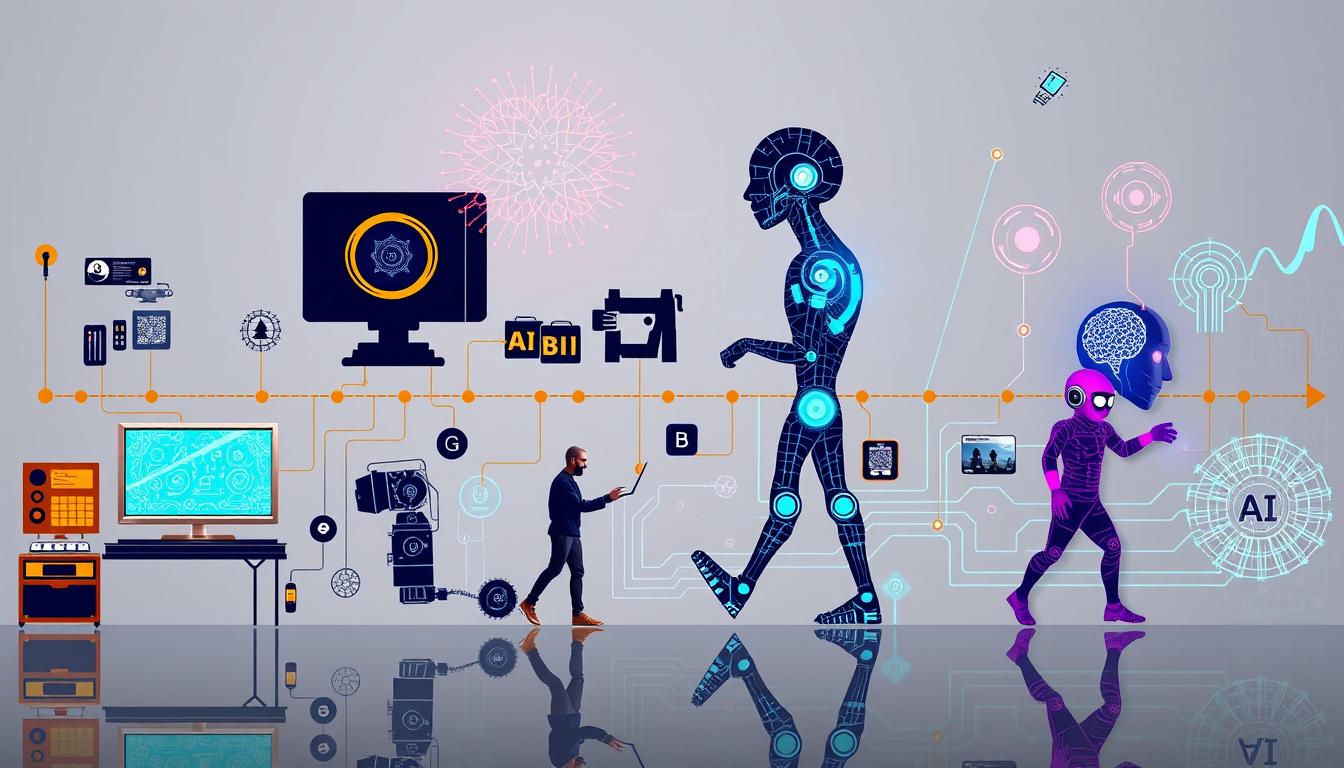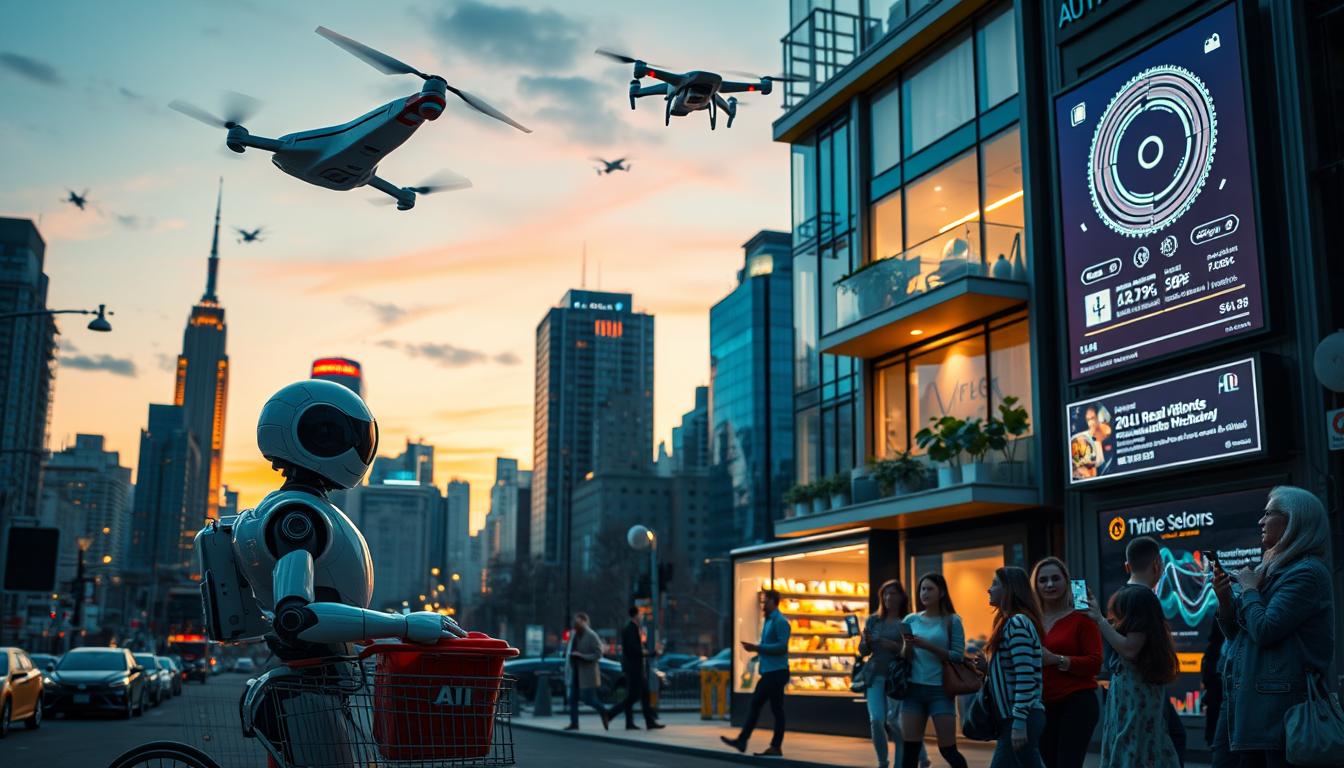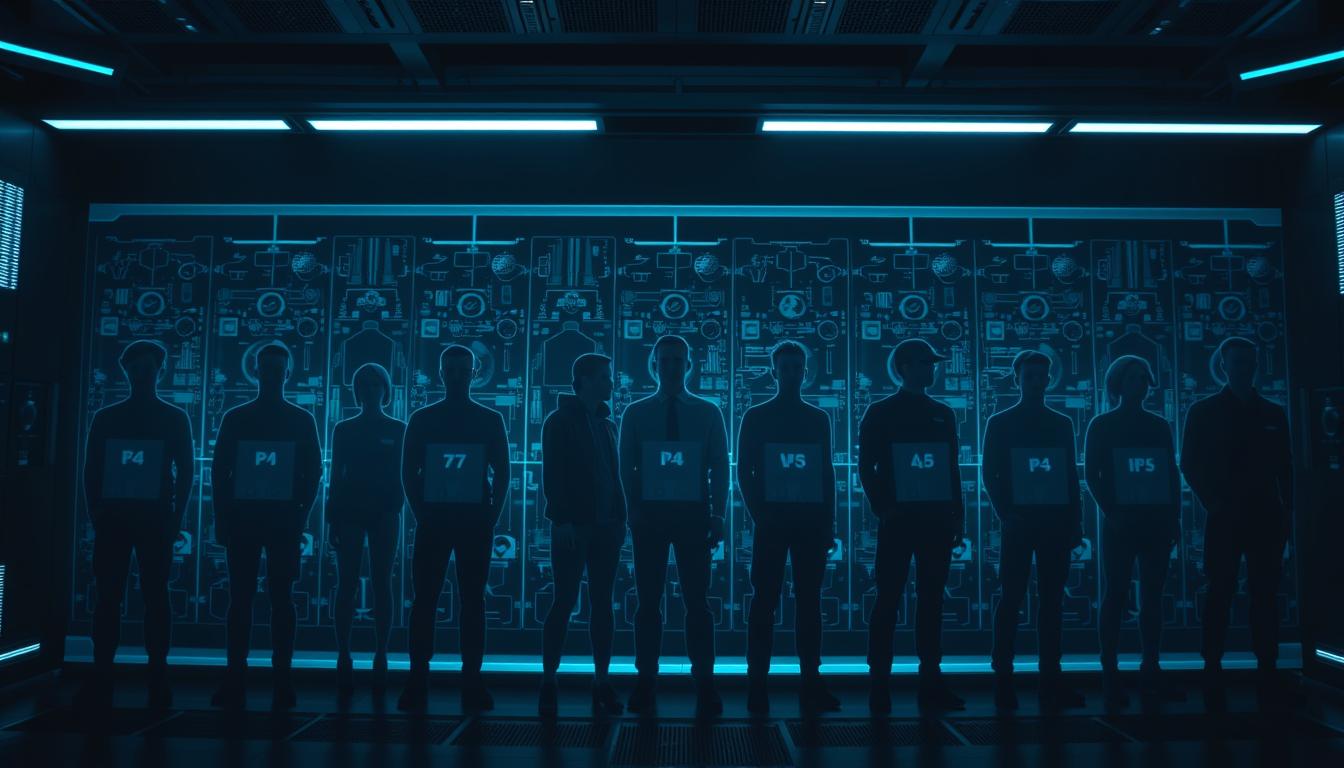Imagine feeling reassured, knowing advanced tech keeps our communities safe every day. Our world faces unexpected threats. Clear View AI offers a groundbreaking solution. It’s a top-notch law enforcement tool. It uses facial recognition and AI to make our world safer for everyone.
Clear View AI uses over 30 billion web-sourced face images. It helps law enforcement and certain businesses identify people quickly. Its easy interface lets users find important data fast. Let’s explore how Clear View AI leads to safer communities and smarter crime-solving.
Key Takeaways
- Clear View AI offers extensive facial recognition technology with 30 billion images.
- The platform supports rapid identification of suspects and victims by law enforcement.
- It serves a critical role in enhancing public safety and reducing crime rates.
- Clear View AI is not publicly available and is used primarily by law enforcement and select businesses.
- The service includes measures for individuals to request removal of their images from the database.
Introduction to Clear View AI
Clear View AI leads the way in investigative tech, especially for the police. It aims to boost public safety using advanced AI and facial recognition. This tech sifts through vast data to help quickly identify and confirm people’s identities.
This platform has over 30 billion faces in its database, grown by collecting photos from the web, like social media. With this huge dataset, it achieves a 98.6% accuracy in recognizing faces. Its technology spots detailed features in images, vital for crime investigation analytics.
Many groups, including police and the Department of Homeland Security, use this tech. Clear View AI, started by Hoan Ton-That and Richard Schwartz, focuses on solving crimes fast and reducing crime in the long run.
This approach is crucial as agencies aim to boost their investigation skills. By using facial recognition and AI, they gain essential insights. This changes the way data is used in solving crimes. This in turn allows for quicker identification of suspects and potential threats, streamlining the investigative process. AI facial recognition not only enhances accuracy but also reduces human error, ensuring that agencies make more informed decisions. Ultimately, this technology provides a powerful tool in modern law enforcement, transforming traditional methods of crime-solving.
The Importance of Data Insights in Today’s World
In today’s world, data insights are incredibly important across all sectors. Businesses are dealing with more information than ever. This makes smart decision-making crucial. Nowadays, 95% of companies need to organize complex data to grow. This highlights how key analytics are in staying competitive.
In the grocery sector, a chain saw late-night sales jump by a third after starting a “Midnight Munchies” section. This move was based on late-night shopping trends. It shows why using data insights to shape strategies can boost profits.
Organizations that use their own analytics align better with their culture. But, outsourcing analytics can save money with subscription plans. Both ways have benefits. Yet, neglecting data quality or having no clear goals can cause issues. Problems often arise from ignoring risk management, not protecting data, and focusing too much on past data.
Starting with analytics might seem hard for small and medium firms. But, using available data sources and free tools can be very helpful. Joining learning communities also helps companies grow.
In short, decision-making is crucial for predicting customer needs, improving operations, and finding new opportunities. Firms that use data analytics usually get ahead, making more money and innovating more. Embracing data insights leads to better understanding of customers, which boosts loyalty and happiness.
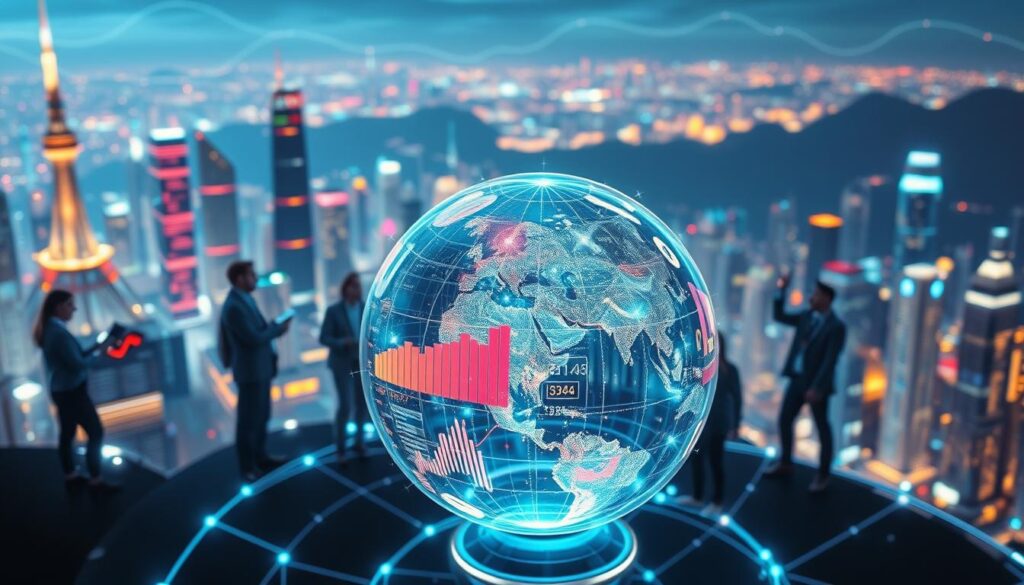
| Aspect of Analytics | Benefits | Common Mistakes |
|---|---|---|
| Data Quality | Ensures reliable insights | Neglecting data quality can lead to poor decisions |
| Decision-Making | Informs strategy and enhances profitability | Lack of clear objectives may hinder progress |
| Risk Management | Identifies potential threats | Overcomplicating analytics can obscure insights |
| Cost Efficiency | Reduces unnecessary spending | Failure to observe data privacy regulations |
| Innovation | Helps identify new opportunities | Overreliance on historical data |
How Clear View AI Works
Clear View AI uses advanced algorithms to boost its Clear View AI functionality. This platform is powered by cutting-edge AI technology for precise facial recognition. It has a huge image database of over 3 billion images from the internet and major social networks. This allows quick and effective data processing.
Law enforcement can quickly search through vast image databases. This speed is key for solving intricate cases. The use of advanced algorithms ensures high accuracy. This helps identify people from various angles and situations, clearly outdoing old facial recognition systems.
The interface of Clear View AI is easy to use, making the experience better. With over 600 law enforcement groups using it, its impact is huge.

Clear View AI performs deep analysis with its large image database. It meets many identification needs in safety and security. Its mix of fast data processing and solid AI technology makes it a top choice in fighting crime.
Benefits of Using Clear View AI for Law Enforcement
Clear View AI is changing the game for law enforcement. It brings many benefits that make their work more efficient. By using advanced tech, officers can solve cases faster and more accurately.
Rapid Case Resolution
Speed is key in solving crimes. Clear View AI helps officers quickly sift through 20 billion faces in databases. This tech is not only fast but super accurate, boasting over 99% accuracy in photo matches, says the National Institute of Standards and Technology (NIST). This means investigations take less time, helping solve cases quicker.
Identifying Suspects and Victims Effectively
Clear View AI is also great at finding suspects and victims, improving public safety. Its algorithms are so advanced that they can identify people with nearly perfect accuracy. With a 99.85% success rate on 12 million photos, officers can trust the leads. This tool helps solve complex cases more efficiently, leading to safer communities.

Facial Recognition Solutions by Clear View AI
Clear View AI brings top-notch facial recognition technology. It sets a high bar in both law enforcement and different sectors. This tech relies on vast data, ensuring it works well even in tough spots. It helps your agency use a big database to better identify people and boost work efficiency.
Precision and Proven Technology
Clear View AI uses cutting-edge algorithms for the best accuracy in spotting people everywhere. It’s been extensively tested, earning trust for its precision. Agencies can rely on it to quickly solve cases, giving a fast response when it’s most needed.
Scalability for Various Agencies
Clear View AI is known for its scalable prices. This means both big and small organizations can use its services, fitting their needs. It offers the flexibility to adjust as things change. So, you can always make the most of facial recognition, fitting into your budget and needs.

Unparalleled Accuracy Across Demographics
Clear View AI stands out for its accuracy in facial recognition. It consistently scores 99% accuracy or better among different groups. This precision is crucial for organizations, including law enforcement. Clear View AI uses a wide range of public images to improve accuracy and tackle biases in facial recognition.
The system excels in demographic analysis. It ensures fair treatment for all communities. Clear View AI only shows results that meet its high accuracy standard. This approach helps avoid discrimination and supports inclusive technology. For example, it can ignore results with less than 99% accuracy. This policy keeps the identification process fair and reliable.
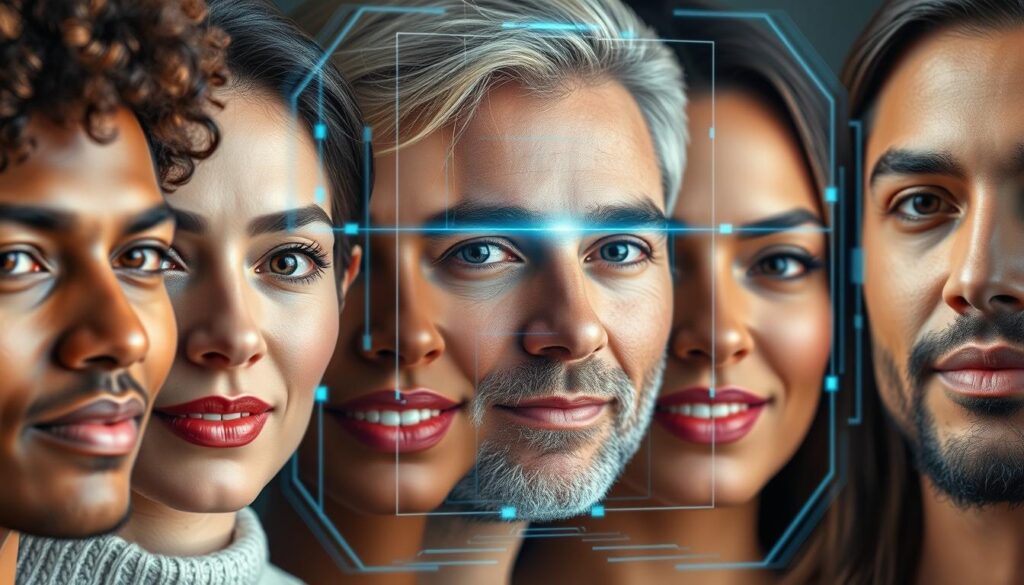
Clear View AI has passed tough tests. The National Institute of Standards and Technology confirmed its top position. Clear View AI uses strong security, like end-to-end encryption. This protects user data and shows the company cares about using this tech responsibly. Respect for data subjects underlines Clear View AI’s ethical promise.
| Feature | Description |
|---|---|
| Accuracy Level | 99% or better across all demographic groups |
| Data Sources | Publicly available images from social media, news, and other open sources |
| Privacy Measures | End-to-end encryption and strict user condition enforcement |
| Accountability | Detailed reports for every system use and search history storage |
| Bias Prevention | Results filtered to ensure 99% accuracy threshold |
By focusing on community representation, Clear View AI improves its inclusive technology. This effort boosts both accuracy in facial recognition and user trust. As the technology evolves, a strong commitment to inclusivity will be essential.
Clear View AI’s Impact on Public Safety
Clear View AI greatly improves public safety, lowers crime rates, and boosts national security. It uses advanced facial recognition to help law enforcement solve crimes and manage risks.
Reducing Crime Rates
Clear View AI significantly cuts down crime. Its database has over 30 billion images. Clear View AI impact helps identify suspects quickly.
It’s 98.6% accurate, helping focus on real cases. Now, over 200 agencies use it, making communities safer.
Enhancing National Security
Clear View AI also betters national security. It spots suspicious activities early on. This helps protect everyone.
Despite debates over its use, its benefits for security are clear. It makes response times faster and work more efficient.

| Country | Regulatory Action | Impact on Clear View AI |
|---|---|---|
| France | Cease collection of data | Restrictions on usage |
| Italy | €20 million fine | Erasure of personal data |
| Germany | Illegal biometric database | Deletion order for user data |
| Belgium | Unlawful use ruled | Usage restrictions |
| Sweden | €250,000 fine | Failure on data protection assessment |
| UK | £7.5 million fine | Personal data deletion order |
| Australia | Stop collecting biometrics | Destruction of existing data |
| Canada | Violation of privacy rights | Linked to surveillance concerns |
These facts show there are challenges, but the focus on public safety is strong. The balance between law enforcement needs and ethics shapes Clear View AI’s future in crime fighting and security.
Commercial Applications of Clear View AI
Clear View AI has a big role in the commercial world, especially for financial institutions. Its facial recognition tech is key for spotting fraud and verifying identities. This means safer transactions for everyone. Learning about these uses shows how companies can improve their work and security.
Identifying Fraud in Financial Institutions
Fraud is a major worry for banks today. With Clear View AI, they can catch fraud faster and protect against identity theft. This not only keeps money safe but also builds trust with customers.
Ensuring Secure Transactions
Digital banking needs to be safe. Clear View AI checks who you are in real-time, stopping unauthorized use. This keeps your financial info safe as more banking moves online.

Data Security Measures with Clear View AI
Data security is key for any company using AI. Clear View AI knows this well. They have put in place strong cybersecurity to keep information safe. They follow many strict rules to do this.
Clear View AI takes safety seriously by following well-known standards. They are proud of their SOC 2 Type II certification. It shows they handle data correctly. Only clients with a signed NDA can see this report. This shows they value trust and open, safe data handling.
The TX-RAMP certification is another big win for them. It shows they meet Texas’s tough security standards. They also do annual penetration testing on their products and cloud. This helps them fix weaknesses quickly.
Vulnerability checks are key in Clear View AI’s safety plan. They do this during all software development stages. They check for problems in many ways, like:
- Static analysis
- Malicious dependency scanning
- Network vulnerability scanning
- Software composition analysis
- Continuous external attack surface management
All devices at Clear View AI have around-the-clock monitoring. They make sure all staff know how to stay safe online. They hold yearly training led by experts. This focuses on cybersecurity and good coding habits.
They use Multi-Factor Authentication (MFA) and Single Sign-On (SSO) to keep access secure. Their Bug Bounty program works with expert researchers. They help find and fix tech issues quickly.
Even with strong security, Clear View AI has faced problems. They’ve been fined in several countries for data privacy issues. This has sparked talks about balancing new tech and strict data security.

In the face of growing facial recognition tech, data security is critical. Clear View AI focuses on keeping data safe. This builds trust in their services and ensures they follow the rules.
Integrating Clear View AI with Your Existing Systems
Today, integrating new technologies quickly is crucial for keeping operations smooth. Clear View AI is designed to mix well with your current systems, enhancing your organization’s capabilities. Here’s how you can integrate it easily and efficiently.
Easy Implementation and Use
Setting up Clear View AI is quick, taking just a few days. This means your organization can start using its features without any big delays. Here are the main points for a smooth setup:
- Intuitive Interface: Its easy-to-use interface means less training is needed.
- Comprehensive Support: Integration and any issues are eased by dedicated help.
- Flexible Deployment Options: You can choose how to deploy, in the cloud or on-site, based on your needs.
Connecting with Other AI Solutions
Clear View AI works well with other AI technologies. This lets you bring together analytics, security, and customer management into one strong operational setup. The upsides of this include:
- Enhanced Data Flow: Share data instantly between systems for smarter decisions.
- Improved Analytics: Merge insights from various platforms for better business intelligence.
- Streamlined Processes: Linking different tech automates tasks, cuts manual work, and boosts efficiency.

By adding Clear View AI to your systems, processes speed up, and you get ready for future tech advancements. It’s all about innovation and staying ahead.
| Integration Aspect | Benefit |
|---|---|
| Intuitive Interface | Makes training easier |
| Comprehensive Support | Makes transitioning smooth and keeps users happy |
| Flexible Deployment Options | Suits your company’s specific needs and setup |
| Enhanced Data Flow | Leads to faster decision-making |
| Improved Analytics | Gives deeper insights for creating better plans |
| Streamlined Processes | Improves productivity and lowers costs |
Using Clear View AI not only boosts your current tech but also sets your organization up for future success. It’s about making the most of digital advancements.
User Testimonials and Case Studies
User testimonials are key in highlighting Clear View AI’s real-world use. Different clients have shared how this software works for them. These Clear View AI experiences show us what the technology can do. They help everyone understand how it can be used.
A police department’s story stands out. They used Clear View AI for better investigations. With a huge database of images, they cracked cases faster. This includes stopping shoplifting and catching identity thieves. The police say solving cases has gotten easier. This shows how case studies prove Clear View AI makes a big difference in fighting crime.
Reports say the facial recognition market in North America will grow a lot by 2027. Clear View AI is a big reason why. Over 600 law enforcement agencies now use it. They’re seeing real benefits from adding this technology.
But, using such powerful tools raises privacy issues. People are talking about how to use data right. Those using Clear View AI need to stay open about what they do. This keeps trust high and feedback positive.
Here’s a table showing success stories with Clear View AI:
| Client Type | Case Type | Outcome |
|---|---|---|
| Law Enforcement Agency | Shoplifting | Increased case resolution rate by 30% |
| Retail Store | Identity Theft | Recovered assets valued at $10,000 |
| Government Agency | Child Exploitation | Facilitated multiple arrests |
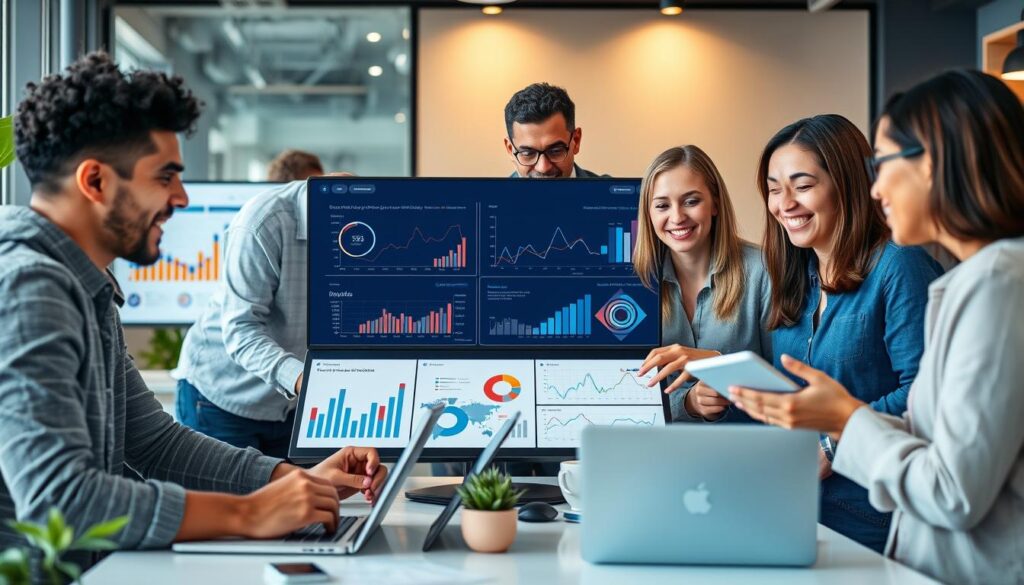
Conclusion
Clear View AI marks a big step in using data for better insights. It helps the law enforcement and business areas in big ways. Its cutting-edge facial recognition tech plays a key role in keeping the public safe. It identifies suspects fast and helps solve cases quicker.
This AI system is not only powerful but also adapts to different needs. It’s great for groups wanting to use data in stopping crime and boosting their work. The story of Clear View AI is about its tech and how it makes things better for safety and work.
Looking ahead, Clear View AI is leading with new ideas and keeping data safe. A recent court decision showed Clear View AI follows data laws. This helps us think more about how to use tech like this right and safely.
In the end, using Clear View AI can make public safety and business better. For those thinking about adding it to their systems, it offers a lot of benefits. Clear View AI’s ideas could help you find new and better ways to handle security and data analysis.



